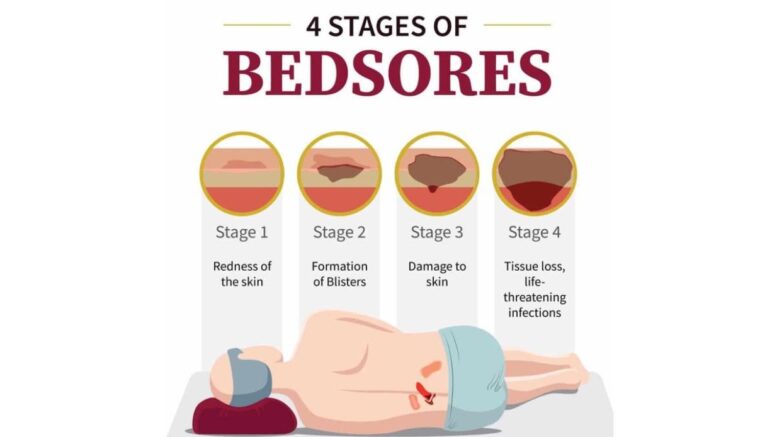Bedsores are ulcers that occur on the skin due to pressure from lying in bed, wearing a cast for extended periods, or sitting in a wheelchair. They are commonly known as pressure ulcers, pressure sores, pressure injuries, or decubitus ulcers.
People with poor nutrition, blood circulation problems, and diabetes have a higher chance of getting bedsores. Nursing home residents suffer from bedsores due to poor care. If you or a loved one suffers from a bedsore due to negligence at a nursing home, it is important to consult an experienced bedsore lawyer who can help you claim compensation for your condition.
Bedsores have four different stages. The first stage has minor effects, while the fourth stage is the most severe of them all. The compensation you can expect from an attorney varies depending on the severity of the bedsore. The four stages of bedsores and the ways to treat them are mentioned below.
Stage 1
In the first stage, the patient’s skin will look red and be warm to touch. At this stage, the skin may be soft, cool, firm, or warm. Bedsores at the first stage can be difficult to identify in patients with darker skin tones. The easiest way to find it is by comparing the affected area with an unaffected area of the same skin color. Soreness can be prevented and treated by
- Changing the patient’s position frequently
- Using pads or cushions to reduce pressure
- Keeping the patient’s skin dry and clean
- Applying barrier creams or moisturizers
Stage 2
Bedsores tend to worsen if left untreated. Stage 2 bedsores appear more like a scrape, blister, or open wound. The area around the skin experiences discoloration and swelling. At this stage, pus or clear fluid may ooze from the wound. Stage 2 bedsores are very painful.
In the second stage, bedsores can be cured by cleaning the wound with water or saline. It is essential to use dressings that keep moisture in your wound and also prevent infection. Moreover, it is important to consult a doctor and take topical antiseptics or antibiotics to recover from this condition.
Stage 3
Stage 3 bedsores have visible damage to the fat tissues and have a crater-like appearance. At this stage, the symptoms of infection, like reddened edges and a foul odor, appear. The tissue in and around the sore shows a black color.
A medical professional will treat stage 3 bedsores by removing infected or dead tissue, applying dressings that improve healing and prevent infection, and using antiseptics or antibiotics.
Stage 4
These wounds are large and deep and expose the muscles, tendons, and bones. Stage 4 bedsores cause huge damage to the bone, muscle, and supporting structures (such as ligaments and tendons). The patient may require surgery to remove the infected or dead tissue or restore the affected area. They may also need skin flaps or grafts to cover the wound.
Final Thoughts
To conclude, bedsores are a serious health condition that can affect anyone who is immobile, bedridden, or has decreased sensation. It is also important to know how to prevent and treat them properly.
Bedsores also happen when nursing home staff fail to offer proper care to the elderly and the chronically ill. If you or someone you know is the victim of negligence in a nursing home, consult a lawyer to find out how you can seek compensation for the damages caused.
